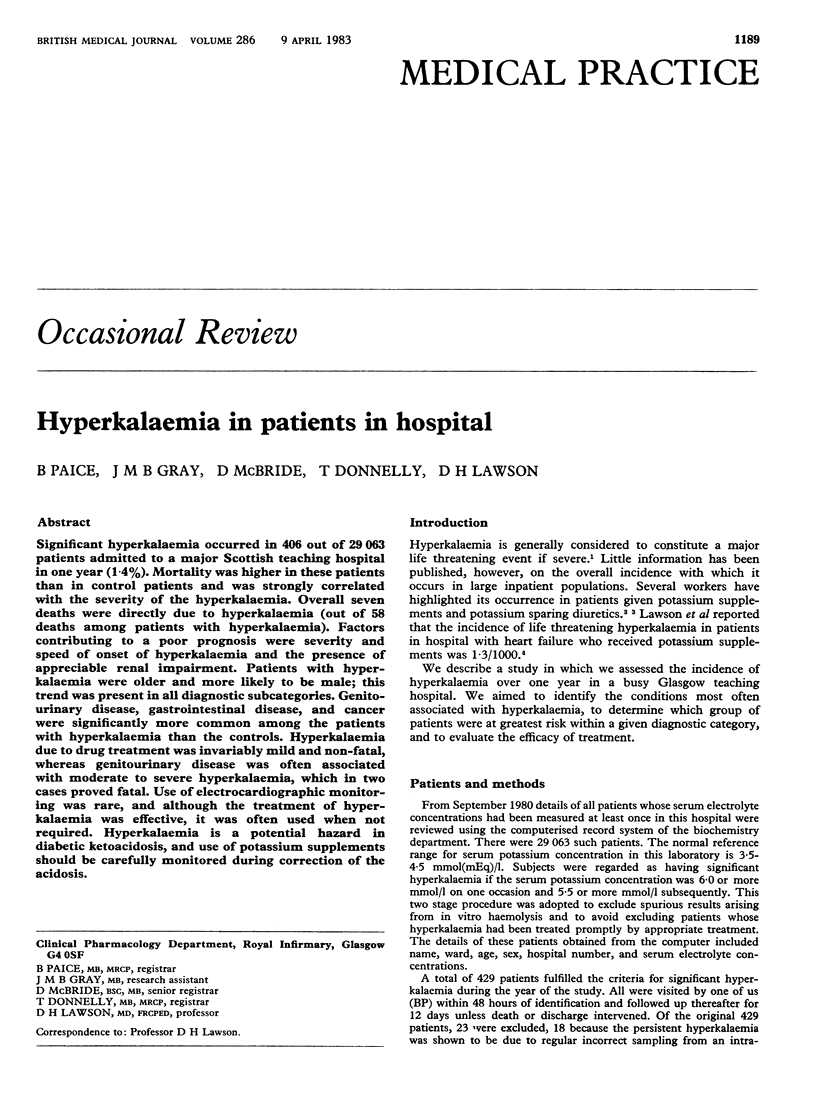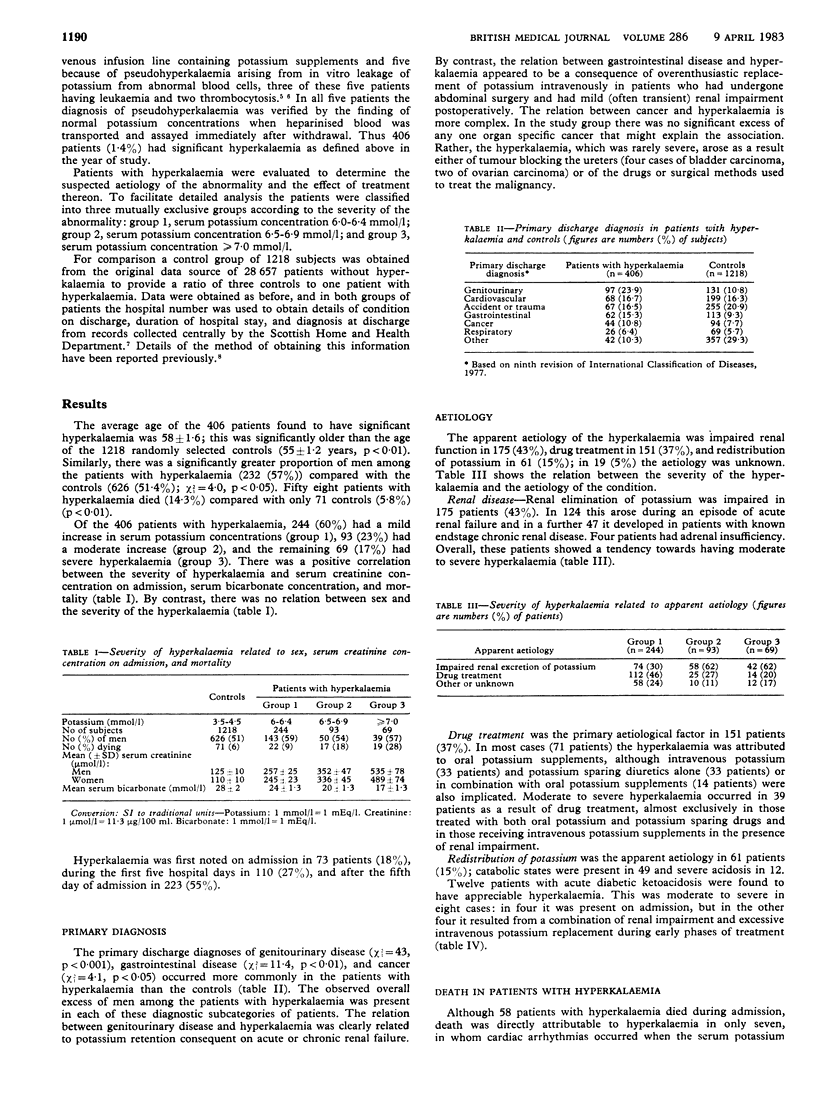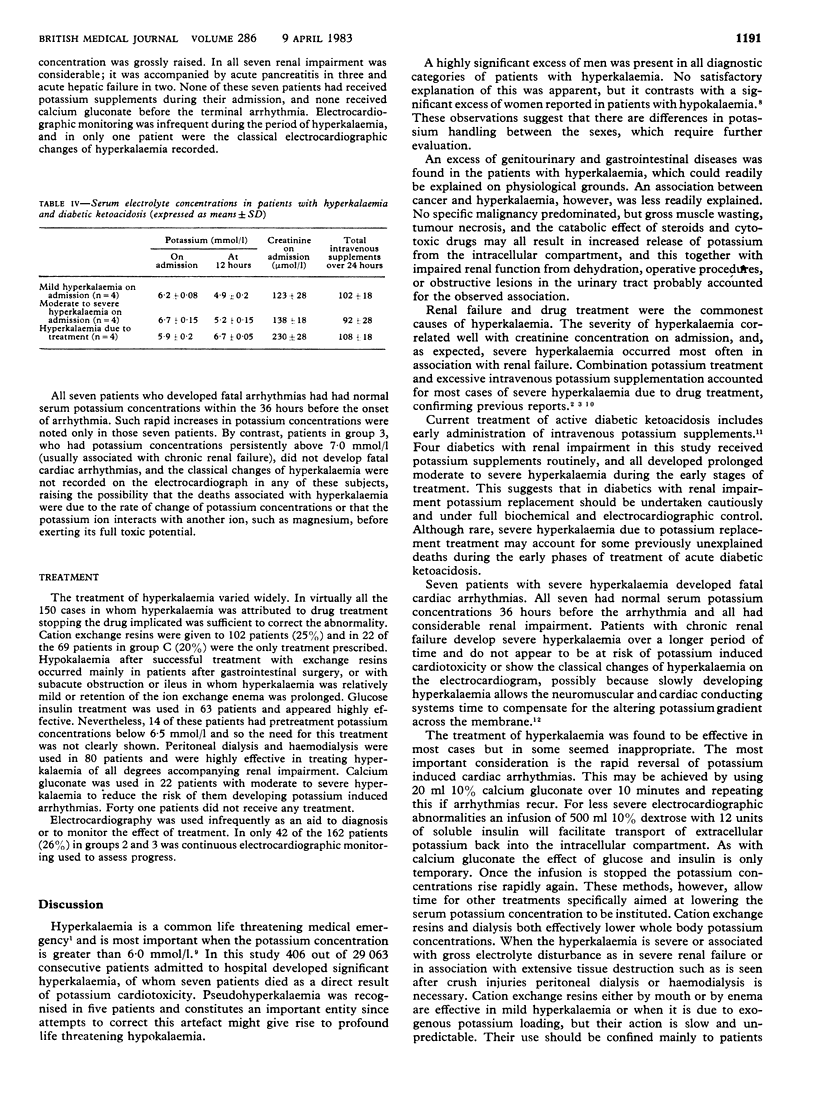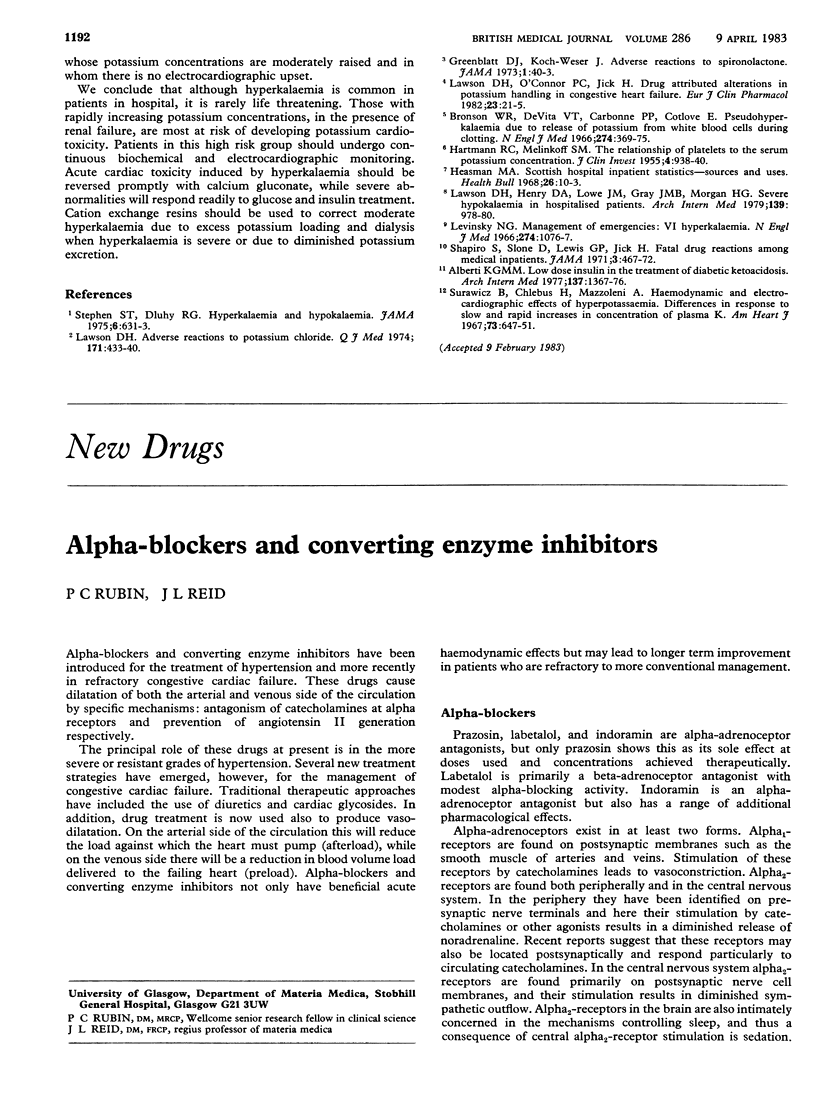Abstract
Significant hyperkalaemia occurred in 406 out of 29 063 patients admitted to a major Scottish teaching hospital in one year (1.4%). Mortality was higher in these patients than in control patients and was strongly correlated with the severity of the hyperkalaemia. Overall seven deaths were directly due to hyperkalaemia (out of 58 deaths among patients with hyperkalaemia). Factors contributing to a poor prognosis were severity and speed of onset of hyperkalaemia and the presence of appreciable renal impairment. Patients with hyperkalaemia were older and more likely to be male; this trend was present in all diagnostic subcategories. Genitourinary disease, gastrointestinal disease, and cancer were significantly more common among the patients with hyperkalaemia than the controls. Hyperkalaemia due to drug treatment was invariably mild and non-fatal, whereas genitourinary disease was often associated with moderate to severe hyperkalaemia, which in two cases proved fatal. Use of electrocardiographic monitoring was rare, and although the treatment of hyperkalaemia was effective, it was often used when not required. Hyperkalaemia is a potential hazard in diabetic ketoacidosis, and use of potassium supplements should be carefully monitored during correction of the acidosis.
Full text
PDF



Selected References
These references are in PubMed. This may not be the complete list of references from this article.
- Alberti K. G. Low-dose insulin in the treatment of diabetic ketoacidosis. Arch Intern Med. 1977 Oct;137(10):1367–1376. [PubMed] [Google Scholar]
- Bronson W. R., DeVita V. T., Carbone P. P., Cotlove E. Pseudohyperkalemia due to release of potassium from white blood cells during clotting. N Engl J Med. 1966 Feb 17;274(7):369–375. doi: 10.1056/NEJM196602172740702. [DOI] [PubMed] [Google Scholar]
- Greenblatt D. J., Koch-Weser J. Adverse reactions to spironolactone. A report from the Boston Collaborative Drug Surveillance Program. JAMA. 1973 Jul 2;225(1):40–43. doi: 10.1001/jama.225.1.40. [DOI] [PubMed] [Google Scholar]
- Lawson D. H. Adverse reactions to potassium chloride. Q J Med. 1974 Jul;43(171):433–440. [PubMed] [Google Scholar]
- Lawson D. H., Henry D. A., Lowe J. M., Gray J. M., Morgan H. G. Severe hypokalemia in hospitalized patients. Arch Intern Med. 1979 Sep;139(9):978–980. [PubMed] [Google Scholar]
- Lawson D. H., O'Connor P. C., Jick H. Drug attributed alterations in potassium handling in congestive cardiac failure. Eur J Clin Pharmacol. 1982;23(1):21–25. doi: 10.1007/BF01061372. [DOI] [PubMed] [Google Scholar]
- Levinsky N. G. Management of emergencies. VI. Hyperkalemia. N Engl J Med. 1966 May 12;274(19):1076–1077. doi: 10.1056/NEJM196605122741907. [DOI] [PubMed] [Google Scholar]
- Newmark S. R., Dluhy R. G. Hyperkalemia and hypokalemia. JAMA. 1975 Feb 10;231(6):631–633. [PubMed] [Google Scholar]
- Shapiro S., Slone D., Lewis G. P., Jick H. Fatal drug reactions among medical inpatients. JAMA. 1971 Apr 19;216(3):467–472. [PubMed] [Google Scholar]
- Surawicz B., Chlebus H., Mazzoleni A. Hemodynamic and electrocardiographic effects of hyperpotassemia. Differences in response to slow and rapid increases in concentration of plasma K. Am Heart J. 1967 May;73(5):647–664. doi: 10.1016/0002-8703(67)90174-3. [DOI] [PubMed] [Google Scholar]


